
The presence of micro- or nano-plastic particles in carotid atheromas significantly raises the risk of myocardial infarction, stroke, or death from any cause within 3 years.
That’s the blunt conclusion of a new multi-center study headed by researchers at the Department of Advanced Medical & Surgical Science, University of Campania, Naples, and involving more than 250 at-risk patients undergoing carotid endarterectomy.
Micro- and nanoplastics (MNPs), defined as plastic particles smaller than 5 mm and 1,000 nm respectively, result from the mechanical breakdown of larger plastic objects. MNPs are increasingly found in air, water, soil, and food worldwide.
According to a 2014 estimate, there are between 15 and 51 trillion individual bits of microplastic in the world’s oceans. They’re estimated to weigh between 93,000 and 236,000 metric tons. That was 10 years ago, and that’s not accounting for the much smaller nanoplastics. The problem has only increased since then.
Chronic exposure to MNPs via ingestion, inhalation, or skin contact, is also increasingly common. Over the last decade, researchers around the globe have detected MNPs in human lung, liver, and placental tissue, as well as in blood, urine, breast milk, and feces. They’ve also been found in tissue of wild birds, fish, and mammals.
Animal studies and in vitro models suggest that specific MNPs may be cardiotoxic, primarily because they can trigger oxidation, inflammation, and apoptosis in endothelial cells, and can also induce myocardial fibrosis. Constant MNP exposure has been linked to a number of respiratory, digestive, and immunologic disorders.
Plastic in Plaques
The new study, published in the March 7 edition of the New England Journal of Medicine, is the first human clinical study to provide firm evidence that MNPs are an independent factor for adverse cardiovascular outcomes in at-risk people.

The multicenter team, headed by veteran cardiovascular researcher, Raffaele Marfella, MD, PhD, analyzed atheromatous plaque tissue for the presence of MNPs, using several methods: pyrolysis, gas chromatography, mass spectrometry, stable isotope analysis, and electron microscopy. They looked for 11 specific types of micro- or nanoplastics. Two types—polyethylene and polyvinyl chloride—showed up at high levels in a large number of the patients.
Marfella’s team initially enrolled 312 patients from three different hospitals, all of whom underwent endarterectomies to mitigate the risk associated with advanced though asymptomatic carotid atherosclerosis and stenosis (greater than 70%). Eight of these patients died prior to discharge, and 47 were either lost to follow-up or not available for complete data collection.
The researchers followed the remaining 257 people for a total of 34 months. They tracked incidence of nonfatal stroke, nonfatal myocardial infarction, and death from any cause, distilling these into a composite endpoint.
Well over half of the patients (58.4%) had atheromas containing polyethylene, at a mean level of 21.7 ±24.5 μg per milligram of plaque. Thirty-one (12.1%) also had detectable levels of polyvinyl chloride, at a mean level of 5.2 ±2.4 μg per milligram of plaque.
The authors note that the minute plastic particles were, in fact, visible to microscopists. “Electron microscopy revealed visible, jagged-edged foreign particles among plaque macrophages and scattered in the external debris.”
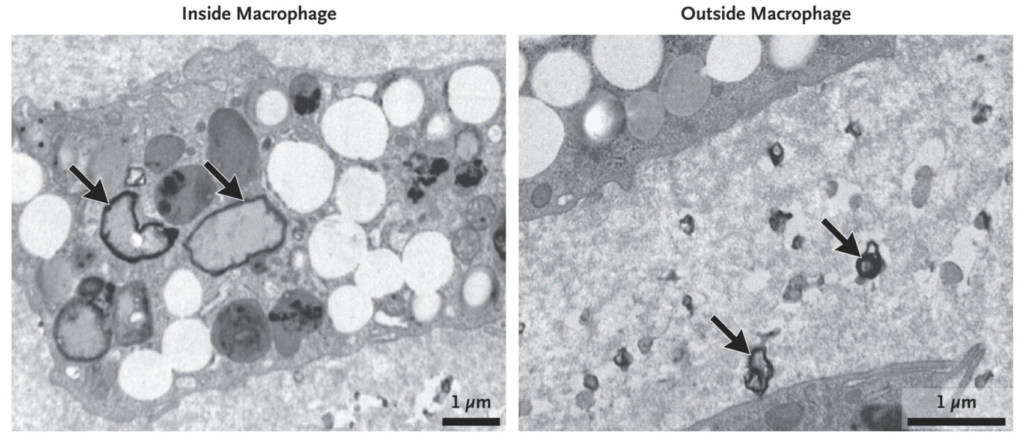
Transmission electron micrographs showing microplastic particles (arrows) inside and outside of living macrophages with atheromatous plaque tissue obtained from a patient who had undergone carotid endarterectomy (From, Marfella R, et al. NEJM. 2024)
The people who carried MNPs were more likely to be male, more likely to smoke, and more likely to be diabetic and severely dyslipidemic than those who did not. But there were no differences between the two groups in terms of body mass index or severity of carotid stenosis. In both groups, the mean age was in the early 70s (71 years old for those with NMPs, 73 for those without).
There were no geographic differences in the prevalence of MNPs based on the locations of the three clinics at which the patients were treated.
A Health Hazard
Beyond the astonishing fact that people these days are exposed to so much plastic that it ends up in their carotid arteries, we must consider the possibility that the presence of microplastics is very detrimental to human health.
Marfella’s data show that compared with subjects who were MNP-free, those who had plastic in their plaques had a 4.5-fold increased risk for the composite adverse endpoint (hazard ratio, 4.53; 95% confidence interval, 2.00 to 10.27; P<0.001).
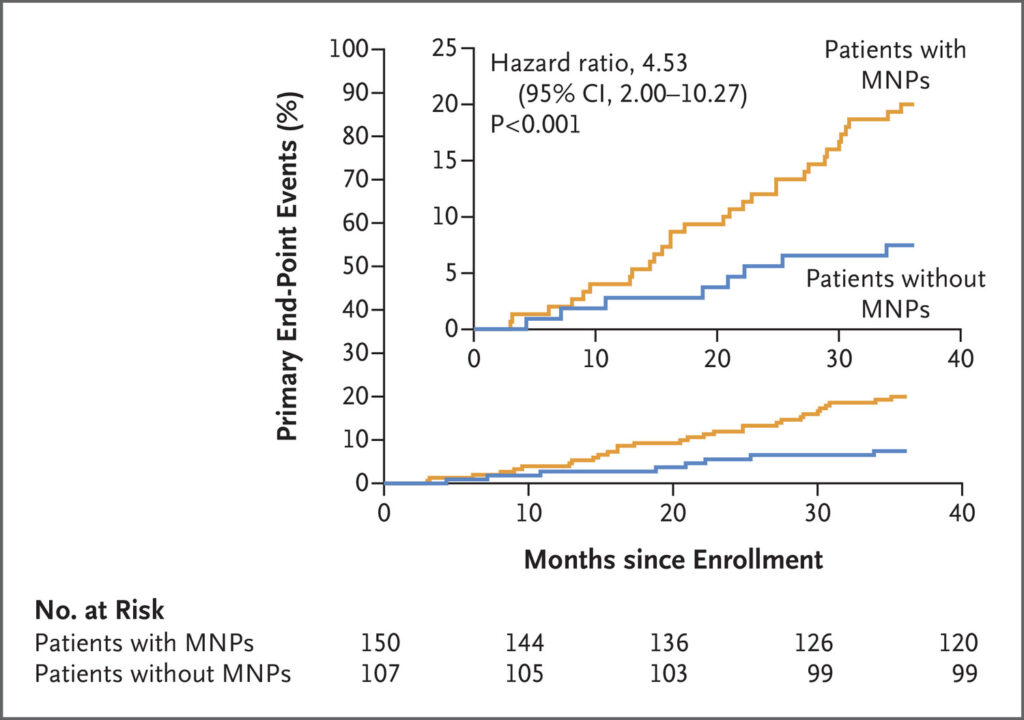
The authors stressed that outcomes were logged via reviews of electronic medical records by reviewers who were unaware of the MNP status of the patients in question.
Among the 150 subjects showing MNPs, there were 14 non-fatal strokes, 10 non-fatal MIs, and 6 deaths. Among the 107 people without MNPs, there were only 5 strokes, 2 MIs, and 1 death.
The incidence of stroke, MI, or death from any cause was 20% among the patients with MNPs, versus 7.5% in those without the plastic residues in their arteries. That’s close to a 3-fold difference.
Put another way, the authors calculated there were 6.1 events per 100 patient-years in the MNP subgroup, versus 2.2 events per 100 patient-years in the MNP-free cohort.
Comparable to Diabetes
How predictive is the presence of MNPs for morbidity and mortality? Very predictive, it seems.
Marfella and colleagues stress that their data do not prove that MNPs cause stroke or MI. But their Cox regression analysis showed that the presence of MNPs confers a hazard ratio for adverse outcomes comparable to that of diabetes (4.53 and 4.76, respectively). MNPs were more predictive of adverse outcomes than age, BMI, total cholesterol, and several other common cardiovascular risk factors.
The Italian researchers also provide further evidence that MNPs are proinflammatory. They measured serum IL-8, IL-1β, IL-6, and TNF-α in blood samples from the study’s participants. They also measured collagen content in the atheromatous plaques, and levels of CD3 and CD68, all of which are indicators of inflammation.
All cytokines increased in correlation with the amount of polyethylene present in the plaque samples, as did the CD3 and CD68 levels. The collagen level went down as MNP levels increased. All of these findings support the notion that MNPs drive proinflammatory pathways in human tissue.
Several previous epidemiological studies concluded that occupational exposure to plastic-related pollutants including polyvinyl chloride can raise the risk of cardiovascular disease. The Marfella provides clinical evidence to bolster that hypothesis.
Direct & Indirect Effects
MNPs may have direct and indirect effects on cardiometabolic health: they can clearly translocate directly into the circulation and into the endothelial tissue, and they may also trigger systemic inflammation which is a key factor in the development and progression of heart disease.
The degree to which MNPs can infiltrate human tissue is largely dependent on particle size: the smaller the particles, the more deeply they are able to penetrate into our organs.
Marfella and colleagues state that the nanoplastic particles they observed in the atherosclerotic plaques from their patients were well below the 200-nm threshold for passage through the gut barrier layer and into the bloodstream.
Ubiquitous & Insidious
This study adds to the groundswell of research in recent years, showing that plastics in our environment—and remember, there are no endogenously produced plastics—are absorbed by our bodies, and that they can affect our physiology.
Two years ago, toxicologists at the Vrije Universiteit Amsterdam published the first study documenting the presence of microplastics in human blood.
Heather Leslie and colleagues had analyzed blood samples from 22 healthy adults, and found plastic residues in 17 of them (77%). Half contained traces of polyethylene terephthalate (PET), a common material for food containers and beverage bottles, and one quarter showed microparticles of polyethylene.

The Leslie study built on earlier evidence, including a 2009 paper documenting plastic additives, especially phthalates, in the urine of 242 pregnant women (Meeker JD, et al. Philos Trans R Soc Lond B Biol Sci. 2009), and a 2019 study showing an average of 20 different microplastics in feces from eight healthy human volunteers (Schwabl P, et al. Ann Intern Med. 2019).
There are many different types of micro- and nanoplastic. Why were polyvinyl chloride and polyethylene the only ones that Marfella and his team detected in carotid atheromas?
It’s a good question with no definitive answer….yet.
“Studies in animal models suggest that the physicochemical features of different MNPs influence whether they reach distant organs,” say the authors. “Additional work is needed to assess whether polyethylene and polyvinyl chloride accumulate preferentially within plaque and whether they are more pathogenic than other types of MNPs in this regard.”
Another big yet-to-be answered question is whether MNPs are themselves directly atherogenic, or simply absorbed into existing atherogenic plaques without playing any direct role in stimulating plaque formation.
The presence of MNPs in circulation and in atherosclerotic plaques may also be an indicator of other environmental, dietary, and lifestyle-based risk factors. In other words, it may be a reflection of a generally unhealthy lifestyle.
“The association between the presence of MNPs within plaque and the incidence of a composite of cardiovascular disease or death outcomes may also entail the risk from exposure to other residual, unmeasured confounding variables, such as unknown exposures during the life course of the patient or, more broadly, the health status and behaviors of the patients,” Marfella and colleagues write. They add that this study did not look specifically at diet or lifestyle-related variables.
Modes of Exposure
Polyethylene and polyvinyl chloride, the two types of MNPs that the Italian researchers detected in carotid atheromas, are ubiquitous in modern industrial societies. They’re used to make food and cosmetic containers, water pipes, and a host of common household and industrial items.
MNPs resulting from the breakdown of polyvinyl chlorhide and polyethylene have been identified in drinking water, in foods, and cosmetic products all over the world. Particles of 2.5 μm or less can also be aerosolized, meaning that they can be inhaled, entering the lungs and the blood. Lauren Jenner and colleagues at the Hull York Medical School in the UK, identified polyethylene microparticles, along with polypropylene in lung tissue samples from 13 people (Jenner L, et al. Sci Tot Environ. 2022).
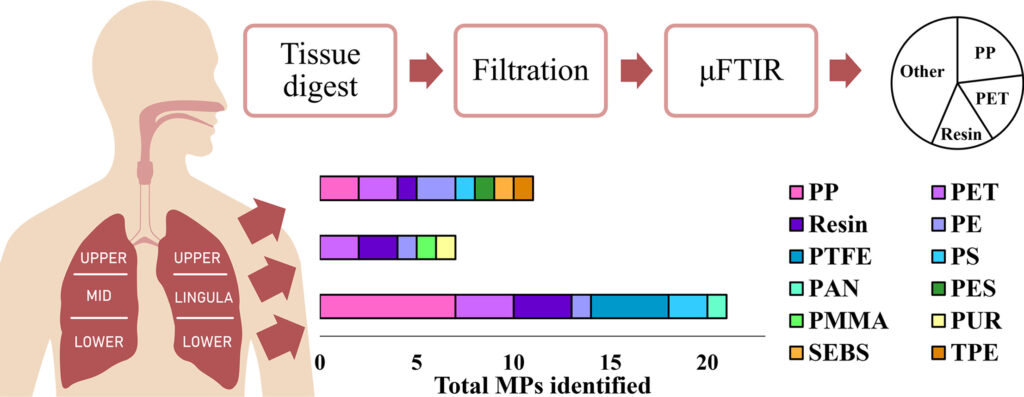
Like many other environmental toxins, microplastics and nanoplastics have the potential to bioaccumulate up the various food chains, with concentrations being highest in apex species, like humans. Some studies have suggested that on their way up the food chain, MNPs absorb and accumulate other toxic substances including persistent organic pollutants (POPs) such as polychlorinated biphenyls (PCBs) and pesticides. In other words, they become carriers for other potentially problematic substances. (Lithner D, et al. Sci Tot Environ. 2011; Koelmans AA, et al. Environ Sci Tech. 2013).
Though researchers are just beginning to understand the full impact of microplastics on human health, there’s already reason for concern. Some types of microplastic can disrupt and destabilize the lipid bilayers comprising cell membranes. Others increase oxidative stress, trigger apoptosis, and alter immune system function (Danopoulos E, et al. J Hazardous Materials, 2022).
Possible Microbiome Effects
Plastic breakdown products might also be harmful to our gut microbial ecology, says Vanessa Stadlbauer-Köllner, MD, a clinical gastroenterologist in the Department of Gastroenterology & Hepatology at the Medical University of Graz, Austria.
“From animal studies it’s already known that microplastic causes changes in the gut microbiome. When you feed mice with microplastic they develop microbiome changes. And when you look at this microbiome it looks like that of somebody who is obese or has cancer, or has some other diseases like diabetes. You see a loss in diversity, an increase of potentially pathogenic species,” Dr. Stadlbauer-Köllner told Holistic Primary Care.
“Could it be that microplastic in our environment is one of the factors that causes obesity and metabolic disorders?”
Public Health Implications
Given the ubitquity of plastics in our surroundings, exposure to MNPs begins practically at birth, and it increases as we age.
Dr. Marfella and his colleagues speculate that this could be one of the many factors that underlying the very well-established correlation between age, carotid stenosis, and cardiovascular disease in general.
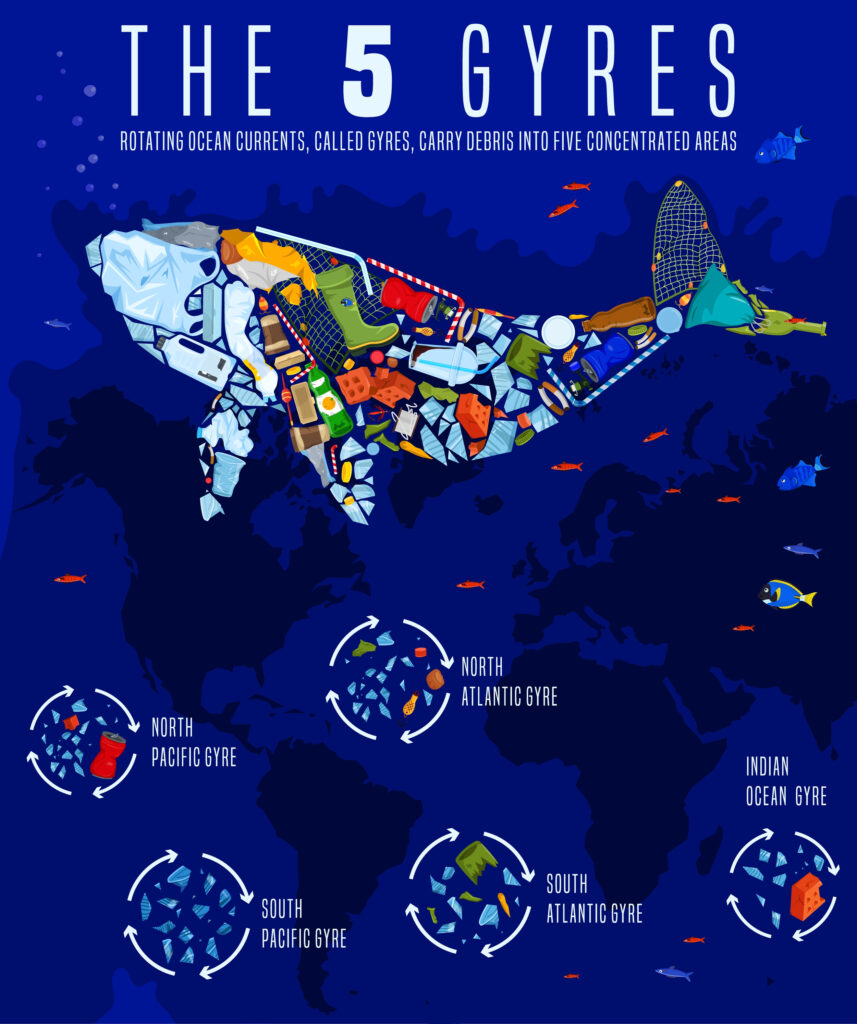
They also point out that some people are much more likely to be breathing and ingesting MNPs than others. Certainly, anyone who works in manufacturing of plastics, or at other jobs that involve constant engagement with plastics will be at greater risk of MNP exposure.
Generally speaking, Blacks, Asians, Hispanics, Latinos, and low-income populations are exposed to higher levels of fine particulate air pollution than Whites and economically well-off people.
The Italian researchers hold that while there are not yet any epidemiological studies looking specifically at racial, ethnic, geographic or socioeconomic differences in MNP exposure, it is reasonable to extrapolate from patterns observed with other pollutants, that the aforementioned groups experience greater MNP exposure as well.
The biggest question prompted by the Marfella MNP study is, what to do about it? This question applies at both the personal and public health levels. Plastics are everywhere in our environments. Production and use of plastics has not declined over the years. In fact, it has increased steadily since the 1950s. Global production of plastics doubled in the 20 year period from 2002 to 2022, from 200 million metric tons to 400 million metric tons.
China is now the biggest plastic producer, accounting for 32% of all plastic materials in 2022; the US contributes roughly 17%.
If MNPs are indeed an independent risk factor for cardiovascular disease, it is one that our species will be contending with for a long, long time.
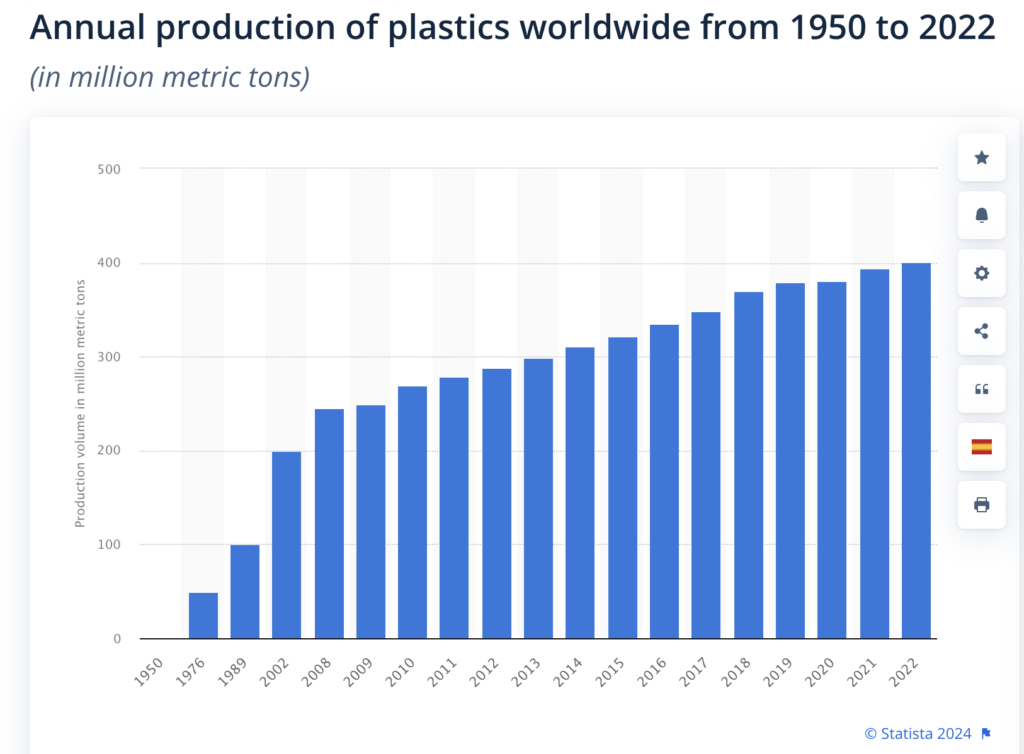
Microbes to the Rescue?
A glimmer of hope in this otherwise dismal picture is coming from some very cutting edge microbiome research showing that certain bacteria, including a particular strain of Pseudomonas aeruginosa, are able to form biofilm “nets” that can trap and bind microplastics.
Building on work by Professors Song Lin Chua and James Kar-Hei Fang at the Hong Kong Polytechnic Institute, Dr. Stadlbauer-Köllner and her colleagues at the Medical University of Graz, are planning studies to look at bacterial strains that could potentially digest microplastics.
“There are some enzymes present in some bacteria that can digest certain kinds of plastics. And some of these bacteria belong to families that occur in the human gut microbiome,” she told Holistic Primary Care. “So, we will screen common gut commensals to see whether they have the genes to produce the enzymes that digest plastic. Then we will feed them with plastic and see if they can really degrade it.”
Though this is obviously a long way off from clinical application, it could very well turn out that it’ll be the microbes that spare us from our own environmental and physiological folly.
END







